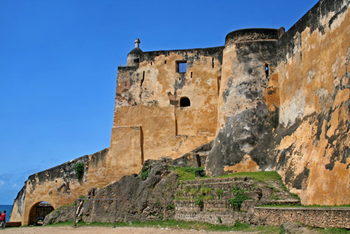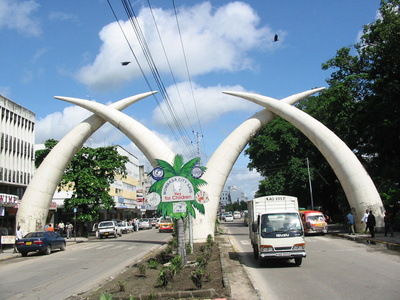Mombasa Kenya
MOMBASA KENYA IS LIVING CULTURE
Mombasa Kenya is laidback, friendly, steeped in history and totally unpretentious. It is living culture. A coral colored fort with cannons peeping out from its bastions greets visitors coming in from the ocean. Dhows are still moored in its harbor and it is one of the oldest settlements in East Africa.
In an old town of narrow streets and Swahili architecture, business goes on as usual in the shadow of the military Fort Jesus which bears witness to many bloody battles for control of this ancient trading port.
Historic port
A long history of maritime trade with Arab nations spanning a millennium and prominent influences of Islamic civilization are seen in more than fifty mosques in Mombasa Kenya.
Ethnically, however, Kenya’s second largest city is more diverse than the capital city of Nairobi. There are also large numbers of Sikh and Hindu temples, Catholic and Anglican churches.
Swahili culture
Over its history, the Portuguese, the fierce Zimba tribe and the Arabs of Oman have all laid claims to this city. British rule started in 1895 and today Mombasa Kenya remains one of the most important links between Africa and the outside world. Despite all these external influences, it is the Swahili civilization that lends that special air and strong sense of identity.
The Swahili coast has such a distinct culture from the rest of Kenya in large part because of the Maungu Plains which separate the country’s interior from the Indian Ocean. The Swahili women are either outfitted in black from head to toe in the buibui or in the brightly colored multi-patterned kanga outfits. Men are dressed in the white kanzu garments with long sleeves.

Fort Jesus, Mombasa Kenya
Fort Jesus Museum
The 16th century Fort is one of the largest draws in Mombasa Kenya. Previously built to protect the Portuguese from Turkish invaders, it is now a museum which houses exhibits depicting more than 700 years of Mombasa’s history.
Displays include many exhibits of Chinese porcelain, Persian and Portuguese glazed ware and military artifacts from its site as well as from ancient sites such as Gede and Ungwana. Parts of the Portuguese frigate, Santo Antonio de Tanna, which sank off the coast during a siege, and extensive relics recovered from the wreck are viewed here. .
There are replicas of cannons in its many battlements and within its compound, displays at the Omani House offer fascinating insights into Swahili life. The great water cistern, barrack and storage rooms remain intact and you can grab scenic views of the Old Town from the northwestern corner of the fort.
While walking around Old Town, keep a lookout for the coffee-sellers serving from the traditional high-spouted jugs. Have your coffee with the Kenyan almond halwa, a local sweet which is more similar to Turkish delight than to the Middle Eastern sweet.

The Famous Mombasa Tusks
Surrounding the Old Town is the modern-day city with wide boulevards and an increasing number of high-rise buildings. The icon of the city is seen on Moi Avenue – twin pairs of elephant tusks made of aluminium built in 1952 to welcome the then Princess Elizabeth of England on her way to a Kenyan safari.
Walking around armed with ice-cold drinks is a good way to know the lay of the land. Be on the lookout for a surprisingly extensive forest of large baobab trees which are often found in ancient settlements along the coast,
Modern Mombasa Kenya is an industrial city. There are major oil refineries and there is a regrettable lack of beaches. The lure of the beaches on the northern and southern coasts will probably prove irresistible but the city is well worth a day’s exploration to catch a glimpse of how life was centuries ago.


 KES 14,350 PPS
KES 14,350 PPS

 KES 12,600 PPS
KES 12,600 PPS 



